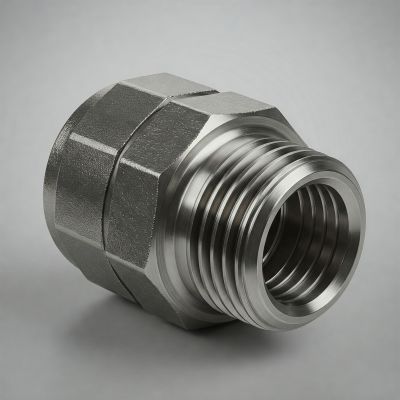Stainless steel is a widely used material known for its durability, corrosion resistance, and strength. But not every grade of stainless steel is created equal. Every grade has distinct qualities that make it appropriate for particular uses. Choosing the right stainless steel can impact the longevity, performance, and cost-effectiveness of your project.
In this blog post, we will explore 316T stainless steel, how it compares to other popular grades, and why it might be the best choice for your application.
Understanding 316T Stainless Steel
316T stainless steel is an austenitic stainless steel that belongs to the 316 family. It is characterized by its high molybdenum content, which enhances corrosion resistance, particularly in chloride-rich environments such as the marine and chemical industries.
The “T” designation indicates additional treatment that improves its mechanical properties and performance.
Key Properties of 316T Stainless Steel
➡️ Excellent Corrosion Resistance – Especially effective against pitting and crevice corrosion.
➡️ High Strength and Durability – Provides superior mechanical performance under stress.
➡️ Good Heat Resistance – Withstands high temperatures and oxidation.
➡️ Easy Fabrication and Weldability – Suitable for manufacturing complex structures.
Common Applications of 316T Stainless Steel
➡️ Marine and shipbuilding components
➡️ Chemical processing equipment
➡️ Medical and pharmaceutical instruments
➡️ Food processing and industrial machinery
➡️ High-temperature industrial applications
Comparison with Other Stainless Steel Grades
A. 316T vs. 304 Stainless Steel
Differences in Composition
316T contains higher levels of molybdenum compared to 304 stainless steel, which gives it enhanced resistance to corrosion and extreme environments.
Corrosion Resistance Comparison
While 304 stainless steel is highly resistant to oxidation and corrosion, it does not perform as well as 316T in chloride and acidic conditions, making 316T a better choice for harsh environments.
Cost and Application Differences
➡️ 316T Stainless Steel – More expensive but ideal for high-exposure conditions.
➡️ 304 Stainless Steel – More affordable and suitable for general indoor and outdoor applications.
B. 316T vs. 316 and 316L Stainless Steel
Chemical Composition and Mechanical Properties
316T has additional treatments that improve its strength and durability compared to standard 316 and 316L. The key difference is in the mechanical performance, where 316T offers superior structural integrity.
Advantages of 316T Over 316 and 316L
➡️ Improved mechanical strength.
➡️ Better performance in extreme conditions.
➡️ Greater longevity in high-stress applications.
Best Use Cases for Each Grade
➡️ 316T – Best for demanding industrial and marine applications.
➡️ 316 – Suitable for standard corrosion-resistant needs.
➡️ 316L – Ideal for applications requiring lower carbon content and better weldability.
C. 316T vs. 430 Stainless Steel (Ferritic Stainless Steel)
Structural Differences
316T is an austenitic stainless steel, while 430 is ferritic. Austenitic steels have higher corrosion resistance and toughness.
Corrosion and Heat Resistance Comparison
316T outperforms 430 in both corrosion resistance and heat resistance, making it a better option for applications requiring exposure to moisture and high temperatures.
Applications and Cost Considerations
➡️ 316T Stainless Steel – More expensive but better suited for harsh conditions.
➡️ 430 Stainless Steel – Less costly and suitable for decorative and indoor applications.
Why Choose 316T Stainless Steel?
Superior Corrosion Resistance
Its molybdenum content makes 316T highly resistant to saltwater, acidic, and harsh industrial environments.
High Strength and Durability
It provides excellent mechanical properties, ensuring durability and longevity in structural applications.
Temperature and Chemical Resistance
316T withstands high temperatures and exposure to chemicals better than most other stainless steel grades.
Industries and Applications Where 316T Excels
Marine and Shipbuilding
Resists saltwater corrosion and extreme weather conditions.
Chemical and Pharmaceutical Industries
Handles aggressive chemicals and ensures contamination-free processing.
Food Processing and Medical Equipment
Meets hygiene standards and resists bacterial growth.
High-Temperature Industrial Applications
Performs well in furnaces, heat exchangers, and exhaust systems.
Cost and Availability Considerations
Pricing Comparison
316T is more expensive than 304 and 430 stainless steel due to its superior properties, but it offers long-term savings by reducing maintenance and replacement costs.
Factors Influencing Cost
➡️ Raw material prices
➡️ Market demand and supply
➡️ Manufacturing and treatment processes
Long-Term Value
Though the upfront cost is higher, its durability and resistance to damage lead to fewer repairs and replacements, making it a cost-effective choice in the long run.
Conclusion
316T stainless steel stands out due to its superior corrosion resistance, high strength, and excellent performance in extreme conditions. Compared to other grades like 304, 316, and 430, it offers unparalleled durability and reliability, making it an ideal choice for demanding industries such as marine, chemical, and medical.
If you’re looking for a long-lasting and highly resistant stainless steel solution, 316T is a great investment. For expert guidance on choosing the right stainless steel for your application, consult industry professionals or explore trusted suppliers today.
Post time: Apr-14-2025


